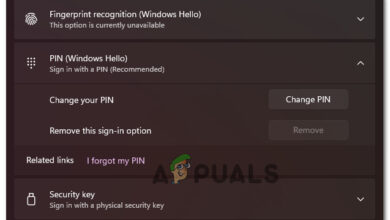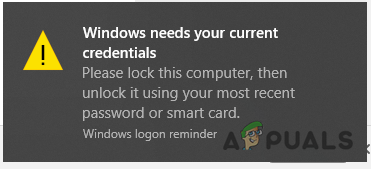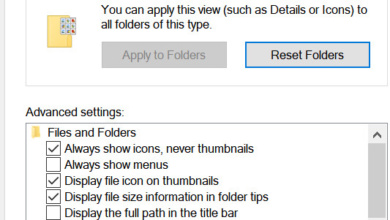How to Enable / Disable Online Speech Recognition in Windows 10?
When the Online Speech Recognition is turned ON, the users can use voice for dictation and talking to Cortana in Windows. It can also be used for other applications that use Windows cloud-based speech recognition. The voice of users can also be used to improve the speech services of Microsoft. When the Online Speech Recognition is turned OFF, then the users will be unable to use dictation or speak to Cortana. The Speech Recognition app and other speech services can still be used even when the Online Speech Recognition is turned OFF. In this article, we will show you methods through which you can easily turn ON or turn OFF the online Speech Recognition in Windows.
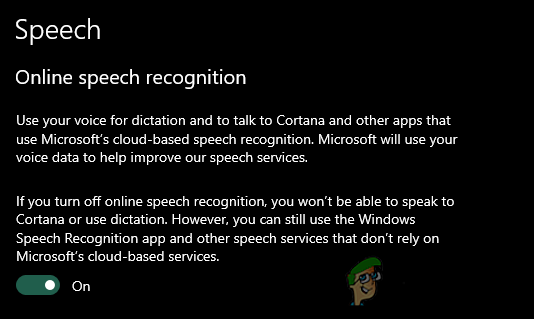
Method 1: During the Windows Setup
When you are installing a fresh Windows, you get the “Choose privacy settings for your device“. This is where you can enable and disable many of the services for the system. The first option will be “Online Speech Recognition“, you can change the toggle to enable or disable it. This only appears one time during the Windows operating system installation. However, you can still enable or disable these settings later on in the Settings app.

Method 2: Using the Settings App
The Settings app in Windows is the place you can customize many different settings for the operating system. You can easily find the Online Speech Recognition setting in the Settings app. This is listed under the privacy section of the Settings app. You just need to navigate to the setting and click on the toggle option to turn it ON or OFF as shown in the below steps:
- Press the Windows and I keys together on your keyboard to open the Windows Settings app. Now click on the Privacy settings icon.
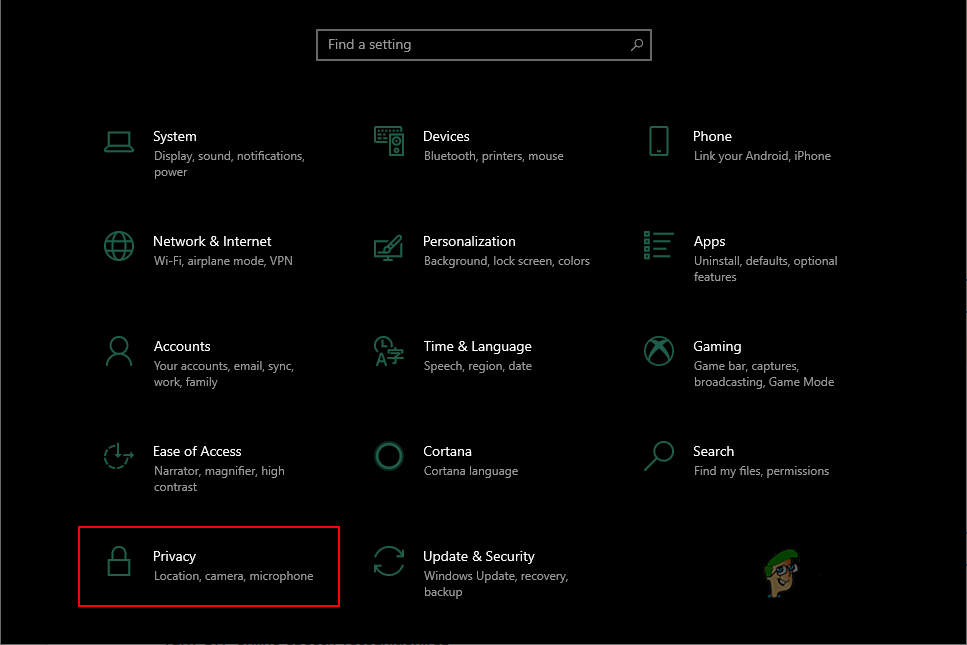
Opening Privacy Settings - Click on the Speech option in the left pane of the window. Now you can Turn ON or Turn OFF the toggle option for Online Speech Recognition.
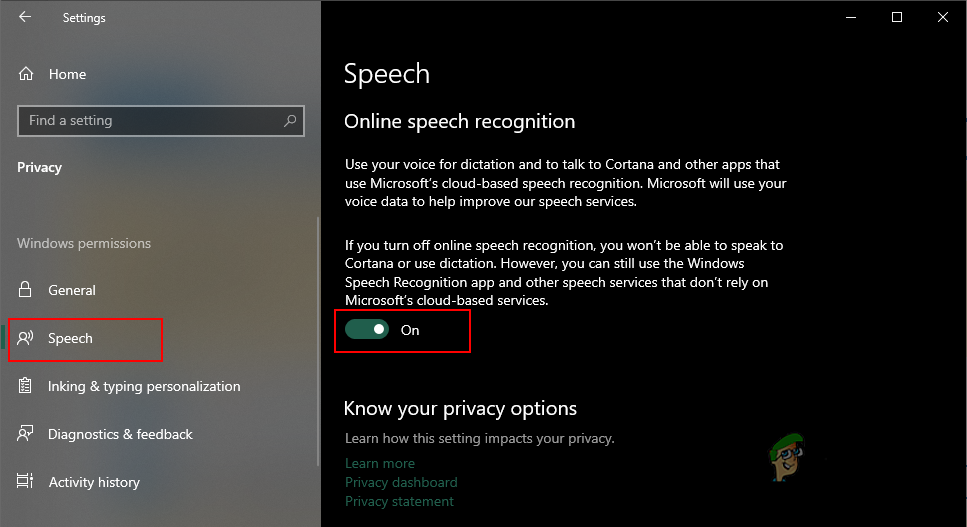
Turning ON the Online Speech Recognition - Once you change the setting, close the Settings app window, and you are done.
Method 3: Using the Registry Editor
The Registry Editor is a hierarchical database that stores all the settings of the operating system. This is another method for turning ON or turning OFF the Online Speech Recognition in Windows 10. This method is a bit technical for normal users than the other methods. You must be signed in as an administrator to use this method. The Online Speech Recognition will already have value in the Registry Editor. If it does not have a value, then you need to create one as shown in the below steps.
- Hold the Windows key and press R to open the Run command box. Then you need to type “regedit” in the box and press the Enter key to open the Registry Editor.
Note: If you get a UAC (User Account Control) prompt, then choose the Yes option.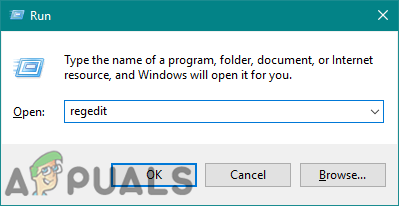
Opening the Registry Editor - You can always create a registry backup before making any new changes. First, click on the File menu in the menu bar and choose the Export option from the list. Then name the file and select the location for the file. Lastly, click on the Save button to create a backup.
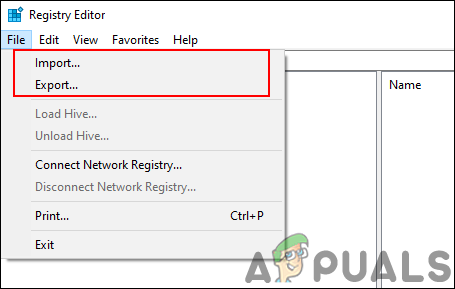
Creating Registry Backup Note: You can always recover a backup by clicking on the File menu and then choosing the Import option. Then you need to select the backup file that you previously created.
- Now in the Registry Editor window, you need to go to the following location:
HKEY_CURRENT_USER\Software\Microsoft\Speech_OneCore\Settings\OnlineSpeechPrivacy
- In the OnlineSpeechPrivacy key, right-click on the right pane and choose the New > DWORD (32-bit) Value option. Now rename this newly created value as “HasAccepted” and save it. If the value already exists, then skip this step.
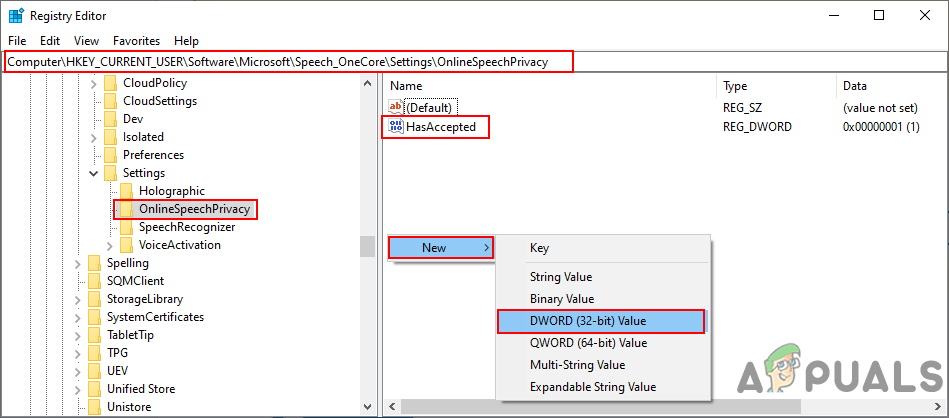
Creating a new value - Double-click on the HasAccepted value to open it. Then change the value data to 1.
Note: Value data 1 is for enabling and value data 0 is for disabling. You can disable the Online Speech Recognition by setting the value data as 0.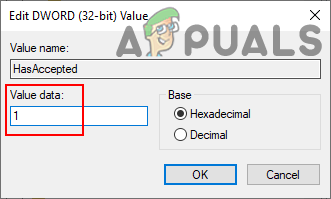
Changing the value data - Close the Registry Editor window and check if the changes are applied. If not, you need to restart the computer to apply the changes that you just made.


